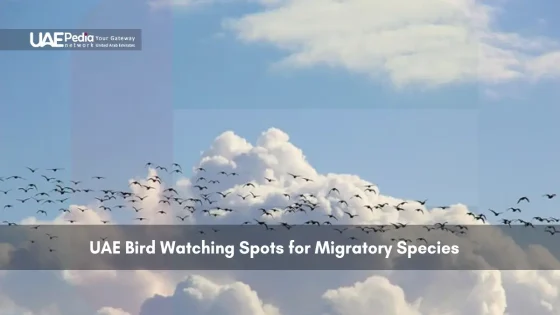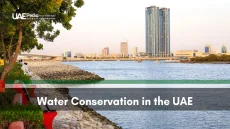What if we told you a sun-baked desert nation quietly hosts over 442 bird species annually—rivaling tropical rainforests? The United Arab Emirates sits at a geographic crossroads where flamingos wade beside futuristic skylines and falcons soar over ancient trade winds. This isn’t just a pit stop—it’s a grand central station for migratory birds traversing continents.
From November to March, the Arab Emirates transforms into a living field guide. Wetlands like Ras Al Khor (just minutes from Dubai’s towers) shelter pink-hued flocks, while mountain reserves harbor rare owls. Protected areas here aren’t afterthoughts—they’re carefully designed habitats where nature and urban ambition coexist.
We’ve explored these avian highways for years, and the magic lies in the contrasts: camels grazing near cranes, mangrove forests framing glass cities. Ready to decode this feather-filled paradox? Our guide to top-ranked destinations for birdwatching reveals where binoculars beat business meetings.
Quick insights before we explore:
- Strategic location: 3 continental flyways converge here
- Diversity spotlight: 65+ resident species, 370+ seasonal visitors
- Modern sanctuaries: 7 major reserves with expert-guided tours
Discover UAE Bird Watching Spots: A Haven for Migratory Birds
Picture this: endless golden dunes suddenly give way to shimmering lagoons where pink-feathered visitors dip their curved bills. This seamless blend of arid terrain and vibrant wetlands creates a stage for winged travelers. Migratory birds don’t just pass through—they linger, turning salt flats and mangrove channels into seasonal homes.
Winter transforms the region into a feather-filled mosaic. From November to March, over 370 species rest here along ancient flight paths. Coastal reserves like Dubai Creek host spoonbills and herons wading through shallow waters. Inland, desert oases surprise observers with rare sightings—like the elusive houbara bustard darting between shrubs.
| Location | Key Species | Best Time | Features |
|---|---|---|---|
| Ras Al Khor | Flamingos | Nov-Mar | Urban-adjacent wetlands |
| Al Wathba Wetland | Greater Flamingos | Year-round | Man-made salt flats |
| Sir Bani Yas Island | Ospreys | Oct-Apr | Protected island sanctuary |
Guided tours make exploration effortless. Local experts lead small groups through mangrove forests at dawn or across desert plains at dusk. You’ll find hides positioned perfectly for photography—whether capturing sandpipers skittering along the coast or eagles soaring over rocky peaks.
Each place tells a different story. Some visitors come for the thrill of spotting rare species. Others simply want to stand where three continents’ winds collide. Whatever your reason, these habitats offer front-row seats to nature’s grand performance.
Bird Life and Unique Species in the UAE
Imagine standing where desert sands meet wetlands, surrounded by flashes of pink and white against blue waters. This isn’t a mirage—it’s the daily reality at Al Wathba Wetland Reserve, where flocks of flamingos paint salt flats like living watercolors. These iconic birds aren’t just passing through—they’ve made this engineered ecosystem their seasonal home.
The country’s avian cast features both local legends and globe-trotting stars. Native bird species like the Arabian babbler share reed beds with migratory herons arriving from as far as Siberia. At Sir Bani Yas Island, ospreys dive for fish while rare Socotra cormorants sunbathe on protected shores—a wildlife drama playing out year-round.
| Species | Habitat | Season | Notable Trait |
|---|---|---|---|
| Greater Flamingo | Al Wathba | Winter | Pink plumage spectacle |
| Goliath Heron | Mangrove forests | Year-round | Largest heron species |
| Socotra Cormorant | Sir Bani Yas | Oct-Apr | Glossy black feathers |
Local birdwatching groups have documented over 120 species found in urban parks alone. Even Dubai’s skyscraper shadows host peregrine falcons—nature’s fastest hunters. “You’ll find wings everywhere here,” says a Abu Dhabi-based guide. “From parking lot palms to untouched islands.”
What makes these areas extraordinary? They prove conservation works. Artificial lakes become flamingo nurseries. Desert edges transform into heron buffets. Every visit reveals new feathered characters—whether you’re spotting bird species from a boardwalk or a 4×4. Ready to meet them?
Best Times and Tips for Birdwatching in the UAE
Ever watched a kingfisher strike at sunrise? That electric-blue flash happens when light meets opportunity. November through March gifts explorers with mild 70°F days—perfect for tracking species like sandpipers and herons. Summer’s 110°F heat? Even desert-adapted wildlife seeks shade.
Local guide Khalid Al Astad swears by the golden hour: “Arrive 30 minutes post-dawn. Birds forage actively, and shadows reveal camouflaged species.” Pack a 300mm lens—it captures feather details without disturbing flocks. Tripods stabilize shots in coastal winds.
| Season | Activity Peak | Gear Tip |
|---|---|---|
| Winter | Migratory flocks | Binoculars + telephoto lens |
| Summer | Resident birds | UV-protective clothing |
Guided tours unlock hidden areas—like mangrove channels where spoonbills feed. Experts decode behaviors: “That head-bobbing egret? It’s hunting crabs,” one explains. Afternoons work too—raptors ride thermal currents when light sharpens.
Track the pied kingfisher by listening for its metallic chirps near freshwater. Scan reed beds slowly—their dive-bomb fishing lasts seconds. Pro tip: Sit still 10 minutes. Birds return to routines, offering front-row seats to nature’s theater.
Unforgettable Destinations: Coastal Reserves, Mangroves, and Desert Oases
Where else can you sip Arabic coffee while flamingos dance in tidal creeks just beyond your cup’s steam? The Arab Emirates hides pockets where nature’s rhythm outshines urban buzz. At Ras Al Khor Wildlife Sanctuary, skyscraper reflections ripple through wetlands teeming with life—a surreal blend of concrete and feathers.
Coastal gems like Khor Kalba reveal another side of the Middle East. This mangrove sanctuary shelters rare collared kingfishers—their turquoise wings flashing through tangled roots. “Time slows here,” whispers a local guide. “Even ospreys pause to watch the tide roll in.”
Head inland to Al Wathba Wetland Reserve, where salt-crusted plains transform into pink-hued wonderlands each winter. Over 4,000 greater flamingos wade through shallow pools, creating living mosaics against the desert backdrop. Morning kayak tours glide silently past herons stalking breakfast.
For stark contrasts, visit Al Qudra Lakes. This human-made wetland reserve blooms like a mirage amid rolling dunes. At sunset, sandgrouse flock to drink while desert foxes prowl the periphery—nature’s delicate balancing act.
| Destination | Highlight | Best For |
|---|---|---|
| Dubai Creek | Urban flamingo flocks | Quick escapes |
| Khor Wildlife Sanctuary | Mangrove biodiversity | Photography |
| Wathba Wetland Reserve | Flamingo colonies | Family tours |
These reserves prove conservation isn’t just possible—it’s poetic. From the coast to the dunes, the United Arab Emirates offers front-row seats to Earth’s oldest migration stories. Ready to write your chapter?
Embark on Your UAE Birdwatching Adventure
Hear that rustle of wings at dawn? It’s your invitation to join nature’s daily spectacle. Across this sunlit land, every sunrise unveils new dramas—flamingos painting salt flats pink, ospreys diving into turquoise bays, and rare collared kingfishers flashing through mangrove tunnels. Your front-row seat awaits.
Venture beyond the usual hotspots. Explore Sir Bani Yas Island’s protected shores, where Socotra cormorants bask like living sculptures. Discover hidden urban oases where herons stalk fish beneath skyscrapers. Even luxury resorts like The Ritz-Carlton in Ras Al Khaimah double as unexpected sanctuaries—one guest recently spotted 17 species before breakfast.
Early risers reap rewards. At Al Wathba Wetland, morning light transforms flamingo flocks into a moving watercolor. Local guides swear by the magic hour when desert foxes retreat and feathered performers take center stage. Pro tip: Pair your adventure with a sunrise paramotor flight for aerial views of migratory patterns.
This country isn’t just a stopover—it’s where continents collide in feather and song. From Abu Dhabi’s engineered wetlands to Dubai’s secret mangrove channels, every corner offers discovery. Pack your binoculars, set that alarm, and step into a world where skylines meet shorelines. Your next winged wonder? It’s already here—waiting.
Head to Ras Al Khor Wildlife Sanctuary in Dubai for flamingo flocks, or Wathba Wetland Reserve near Abu Dhabi—a protected haven for greater flamingos and herons. Don’t miss Khor Kalba’s mangroves on the east coast, where rare species like the white-collared kingfisher thrive.
Plan visits between October and April when temperatures dip. Flamingos peak at Ras Al Khor from November to March. Early mornings or late afternoons offer golden-hour lighting and active bird behavior—perfect for snapping that iconic pink-hued shot!
Absolutely! Spot the elusive Socotra cormorant nesting on offshore islands or the Arabian bustard in desert plains. Keep binoculars ready for the creamy-feathered crab plover along eastern shores—it’s a regional specialty you won’t find in many other places.
Lightweight, neutral-colored clothing blends into landscapes. Bring a reusable water bottle, sunscreen, and a wide-brimmed hat—Emirati sun doesn’t play! A zoom lens (200mm+) helps capture details, and local guides often recommend eBird or Merlin apps for real-time sightings.
Yes! Many reserves offer expert-led tours—ideal for newbies. At Sir Bani Yas Island, rangers share stories about ospreys and gazelles coexisting. Check with the Environment Agency Abu Dhabi for seasonal events; some even provide loaner binoculars if you’re testing the hobby.
Ras Al Khor’s flamingo-filled lagoons sit minutes from Dubai’s skyline—surreal contrast! For serenity, kayak through Jubail Mangrove Park in Abu Dhabi, where herons nest above tidal channels. East Coast gems like Khor Fakkan’s rocky shores attract migratory shorebirds rarely seen inland.


















